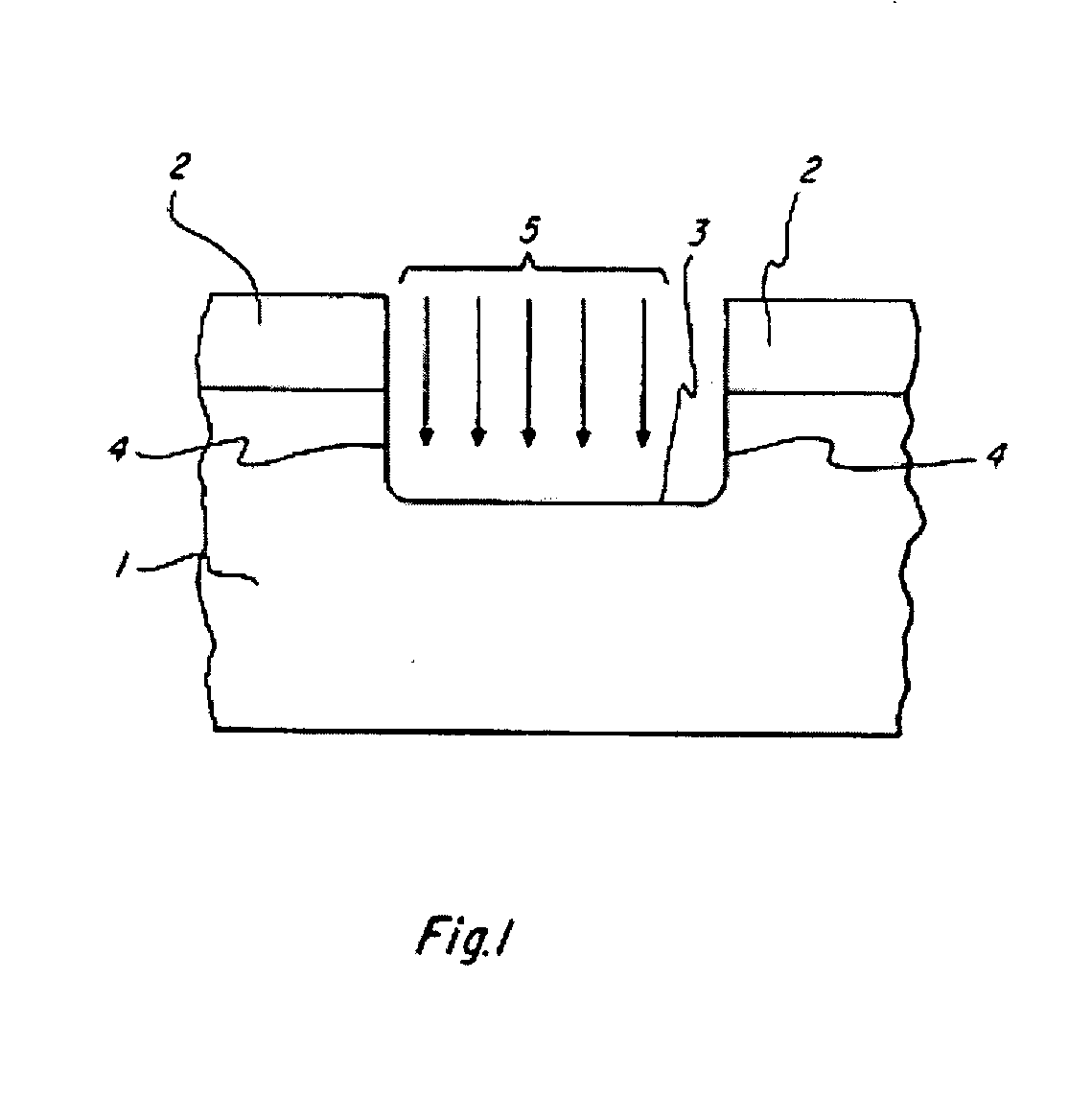Plasma etching using dibromomethane addition
a dibromomethane addition and etching technology, applied in the field of anisotropic plasma etching of silicon, can solve the problems of inability to achieve reasonable reliability, low etching efficiency, and low etching efficiency, and achieve the effect of inhibiting the formation of compounds
- Summary
- Abstract
- Description
- Claims
- Application Information
AI Technical Summary
Benefits of technology
Problems solved by technology
Method used
Image
Examples
Embodiment Construction
[0018] The present invention teaches that a highly anisotropic etch can be achieved by the addition of dibromomethane to the silicon etching chemistry. Ion bombardment overcomes the resistance to etching on flat surfaces, but lateral etching can be suppressed by the formation of a Si—Br compound on the sidwalls.
[0019] A five (5) wafer Reactive Ion Etch plasma reactor was used for the following experiments. The wafers rested on the unpowered 12 inch diameter quartz plate which in turn rested on an anodized aluminum electrode.
[0020] The counter electrode was stainless steel. The RF frequency was 13.56 MHz. The process conditions for the etching of heavily phosphorus doped polysilicon were as follows:
[0021] SiCl4=200 sccm
[0022] Cl2=20 sccm
[0023] Power=200 watts
[0024] Temp.=60.degree. C.
[0025] Plate Spacing=1 inch
[0026] Pressure=20 milliTorr.
[0027] The polysilicon etch rate was about 500 angstroms / min. After 50% overetch, the polysilicon was severely undercut, indicating essent...
PUM
 Login to View More
Login to View More Abstract
Description
Claims
Application Information
 Login to View More
Login to View More - R&D
- Intellectual Property
- Life Sciences
- Materials
- Tech Scout
- Unparalleled Data Quality
- Higher Quality Content
- 60% Fewer Hallucinations
Browse by: Latest US Patents, China's latest patents, Technical Efficacy Thesaurus, Application Domain, Technology Topic, Popular Technical Reports.
© 2025 PatSnap. All rights reserved.Legal|Privacy policy|Modern Slavery Act Transparency Statement|Sitemap|About US| Contact US: help@patsnap.com


